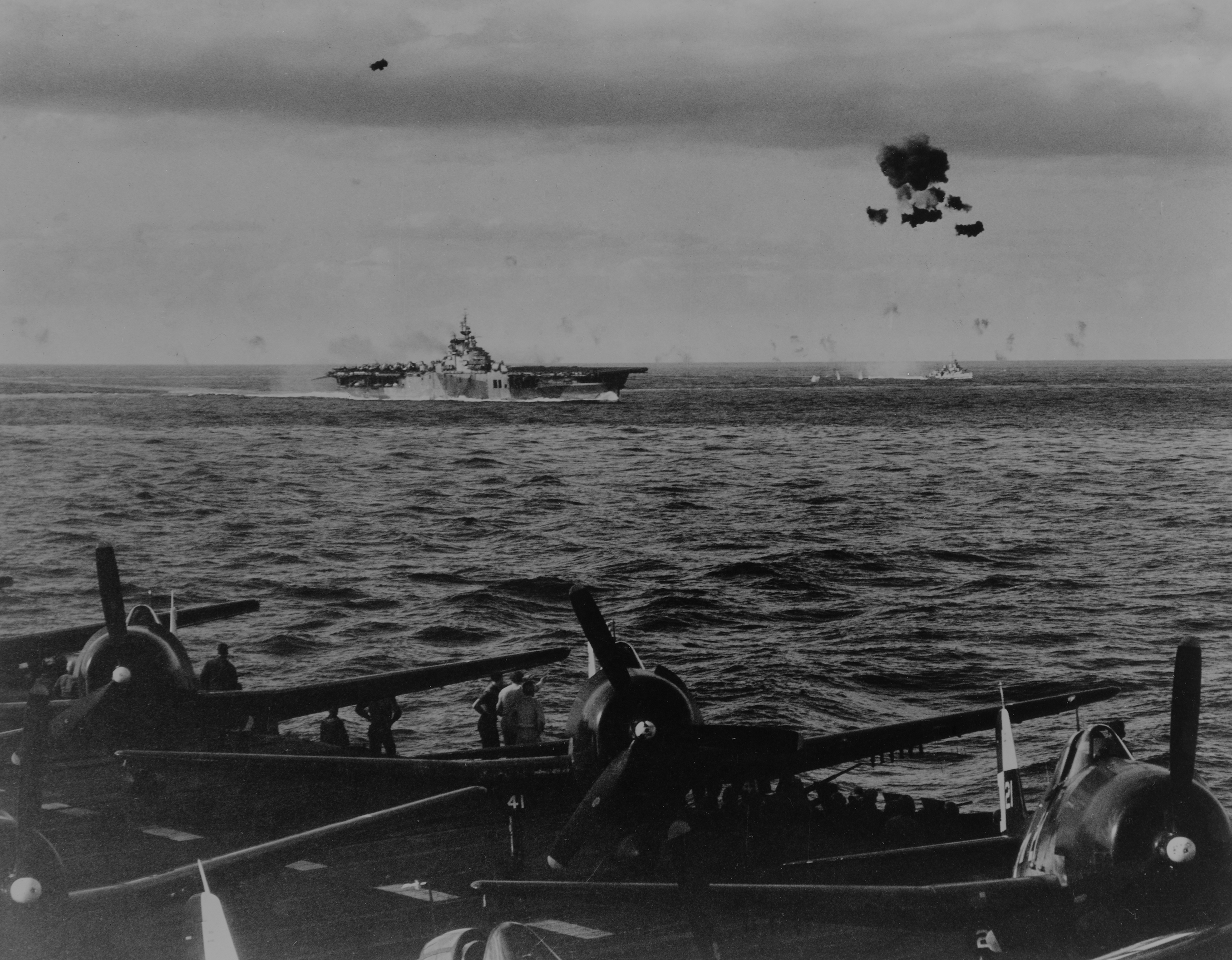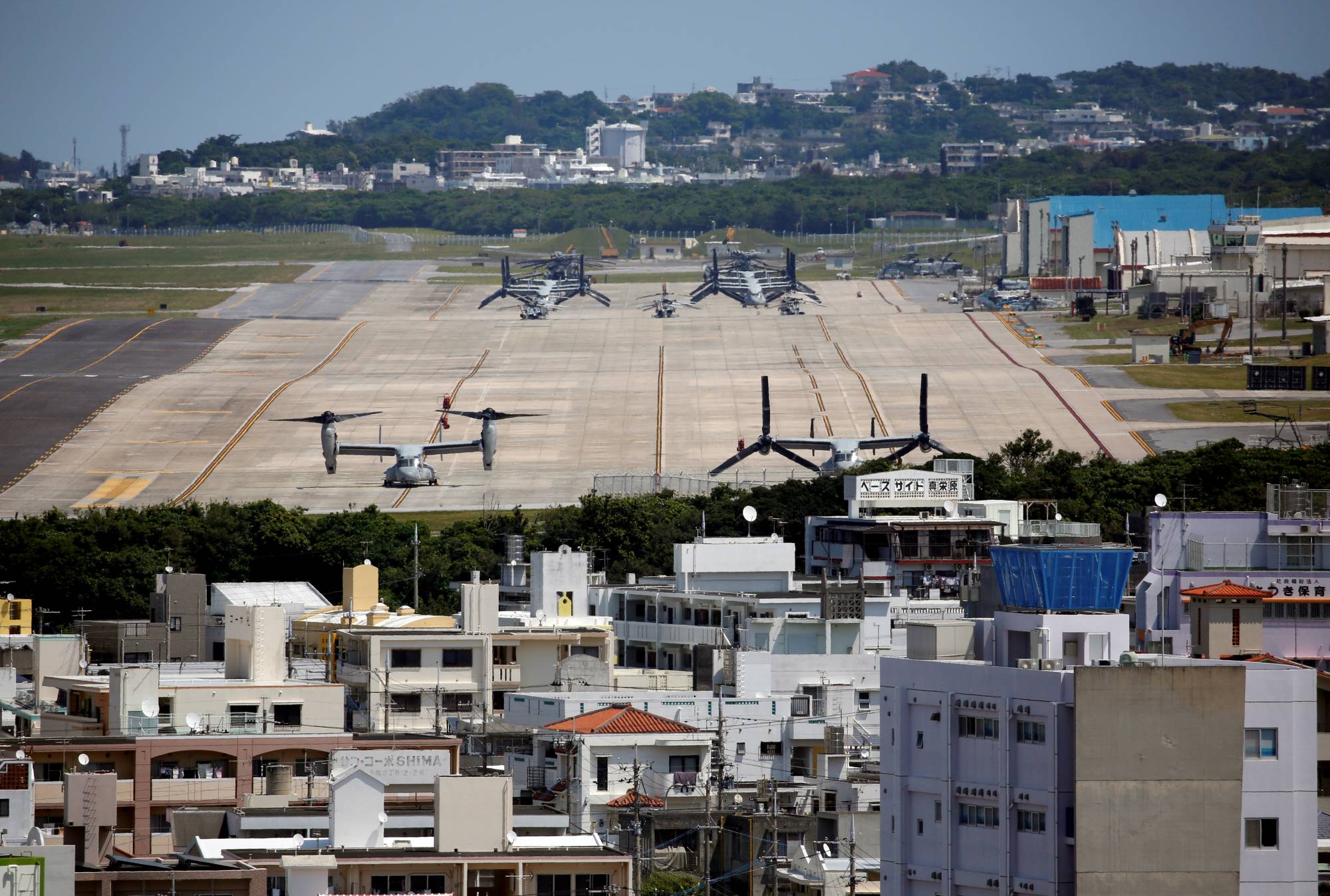Navy Base In Okinawa - 26°16′15″N 127°44′53″E / 26.27083°N 127.74806°E / 26.27083; 127.74806 Coordinates: 26°16′15″N 127°44′53″E / 26.27083°N 127.74806°E / 26.27083; 127.74806
(ICAO: ROTM) is a United States Marine Corps base located in Ginowan, Okinawa, Japan, 5 NM (9.3 km; 5.8 mi) NE
Navy Base In Okinawa

Marines from the 1st Marine Aviation Wing and other units and has been a US military air base since the defeat of the Imperial Japanese Army at the Battle of Okinawa in 1945. Marine pilots and crews are assigned to the base to train and provide air support to other ground and naval personnel Marines in Okinawa and throughout the Asia-Pacific region. MCAS Futma is part of the Marine Corps Installations Command Pacific.
Toxic Compounds Found Around U.s. Bases In Japan
As well as extensive barracks, administrative and logistics facilities. The air station is tasked with operating a variety of fixed-wing, rotary and tilt-rotor aircraft in support of III. The Naval Expeditionary Force, the Japan-US Defense Alliance, and many allies and partners in the region. The base is also used as a UN air distribution center to respond to disasters or other crises requiring air deliveries due to the length of the runway and altitude.
Base relocation has been a major political issue for Okinawa, Japan and the US military and diplomacy in Asia for years.
Futma Airport was built by the US Army after the Battle of Okinawa in 1945. According to Ginowan City records, the total population of Ginowan Village (now Ginowan City) in 1944 was 12,994.
It was originally assigned for use by the Eighth Air Force to deploy B-29 Superfortress strategic bombers in the planned invasion of Japan. With the end of the war, the airfield became a United States Air Force facility in the Far East, known as Futma Air Force Base, and served as an auxiliary airfield for nearby Qada Air Force Base, which housed fighter and jet fighter squadrons as part of the Air Force. defense of the Ryukyu Islands. The base was transferred to the United States Navy on 30 June 1957 and subsequently developed into a United States Marine Corps Air Station Seabees from Mobile Construction Battalion USN 3, expanded by detachment from MCB 2.
Base Related Data
When the Seabees were done, they also set up facilities at the base for Marine Communications Unit 37 Futma to move out of Kada. In 1957 the name was changed to Naval Security Group Activity Futma and in 1960 it was again changed to Naval Security Group Hanza. The group decommissioned Futma in 1999.
Each year, MCAS Futma opens its doors for the Futma Flight Line Fair, which features performances by American bands, musical groups, static displays of all aircraft, military vehicles and demonstrations.
Futma's 75-meter elevation provides a safe and effective location for humanitarian aid and disaster relief operations in the event of a tsunami, which would render Naha International Airport inoperable at sea level.

The 9,000-foot runway also allows for the safe landing of the world's largest commercial and military cargo aircraft, including the Antonov An-124 Ruslan, which has landed at Futma several times.
U.s. Military Restricted Following Rape Claim
The airbase has become the focus of various political controversies in recent years. Due to population growth and encroachments around the base, concerns about flights over residential areas causing noise, air pollution and endangering public safety have also become controversial issues in Ginowan City, as the airport is surrounded by residential areas very similar to the old Hong Kong. airport before its relocation in 1998.
After the crash of a Marine Corps CH-53D transport helicopter on the campus of Okinawa International University in August 2004, safety concerns were raised after the aircraft suffered mechanical problems. Three crew members suffered minor injuries, but there were no casualties on the ground.
The Guardian said that putting MCAS Futma in Ginowan "would be like landing an F22 in Hyde Park [in London]."
Local residents have also been concerned about groundwater and soil contamination and pollution caused by base operations: for example, Lt. Col. (ret.) Chris Roberts (USMC) told The Japan Times that his base maintenance team is found leaking drums of Agt Orange. in the base in 1981.
Uk Carrier Queen Elizabeth Holds Maiden Drill With Japan's Sdf
The US Department of Defense (DoD) states that Agt Orange was never deployed to Okinawa, and an investigation commissioned by the Department of Defense found no evidence that Agt Orange was ever deployed to Okinawa.
(For more details, see Agt Orange: Okinawa, Japan.) In 2019, high levels of perfluorooctane sulfonate (PFOS) were found in the waters near the facility as well as in the blood of Ginowan residents, but the USMC did not issue a permit until Okinawa Prefecture . base control authorities.
Special interest groups, including supporters and protesters, often gather at Futma's gates. Okinawan locals clean up vandalism and debris left by protest groups every week.

Mayor Atsushi Sakima of Ginowan City and Col. James G. Flynn, commanding officer of Marine Corps Air Station Futma, signed a bilateral agreement on June 26, 2013 at MCAS Futma, which sets out evacuation procedures for Okinawans in the event of a natural disaster and provisions for evacuation drills to sustain emergency situations.
Okinawa Governor Renews Demand To Stop Marine Corps' Futenma Base Relocation Plan
Immediately before, during, or after a natural disaster, especially a tsunami, MCAS Futma may use procedures to open one or more station gates to allow evacuees immediate and direct passage to higher ground or shelter. The agreement comes after close cooperation between Ginowan City and MCAS Futma and signifies the importance the city and the air station place on mutual security and cooperation, officials said.
The base, along with its effect on the families living nearby and the local cultural heritage, is the subject of To Futma, a collection of short stories by Okinawan author Tatsuhiro Oshiro.
There are various plans to move the Futma Marine Corps Air Base—first off-island and then on-island—but as of November 2014.
Onaga won over incumbent Nakaima, who had earlier approved work on the depot to relocate the base to Camp Schwab in Hoko. However, Onaga vowed to veto the landfill work needed to build the new base and insisted that Futma be moved out of Okinawa.
Japanese Island Of Mageshima Could Become An Unsinkable Us Aircraft Carrier
In August 2015, the Japanese government agreed to temporarily suspend construction activities while negotiations with Okinawan officials continued. The author, an international relations expert, calls for a new approach to reducing the base load on Okinawa, taking into account changes in the US military's strategy in the region.
For the past 25 years or so, it has been nearly impossible to have a peaceful and productive discussion on the subject of US military bases in Okinawa. The main reason was a dispute over the relocation of Marine Corps Air Station Futenma to Ginowan. As the standoff continued, the rhetoric became increasingly strident, hostile, and ideologically polarized. In what follows, I attempt to redirect the discussion to the original rationale for the plan, namely to alleviate the danger and burden on local citizens.
Proposals to return MCAS Futenma had been on the table since 1995, when the beating and rape of an Okinawan girl by three US soldiers sparked a wave of protests and calls for a revision of the 1960 Status of Forces Agreement (SOFA). In 1996 .hoping to stem the tide of anti-base sentiment in Okinawa, the Japanese and US governments reached an agreement to close the base and return the land to Japan within seven years, provided suitable replacement facilities were built elsewhere. In late 1999, the government of Nago, in northeastern Okinawa, tentatively approved a plan to build replacement facilities for Futenma offshore of the city's Henoko district. However, the relocation plan adopted by the Japanese and U.S. governments in 2006 (as part of the U.S.-Japan Reorganization Implementation Roadmap) ignores the conditions set by local governments. In 2009, when the Democratic Party of Japan took over from the Liberal Democratic Party, Prime Minister Hatoyama Yukio strongly disagreed with the 2006 plan and promised to move the Futenma facilities "at least outside the prefecture." The following year, however, he backtracked and reverted to the 2006 plan.

Amid leadership changes at the national and prefectural levels and growing regional security concerns posed by North Korea and China, Washington and Tokyo have repeatedly changed the terms of the relocation agreement, and these unilateral changes have fueled mistrust and hostility among Okinawans. . As this anti-fundamental, anti-Tokyo sentiment grew, the possibilities for negotiating a solution diminished.
U.s. Naval Hospital On Camp Foster Provides Covid 19 Vaccines To Local Japanese Employees > Marine Corps Installations Pacific > News
Moreover, the escalating political and verbal warfare between Okinawa and the national authorities helped turn the issue into a highly charged clash of ideologies and identities. Supporters of the government's position accuse the Okinawans of blocking the move for mercenary motives or of being pawns in China's regional strategy. On the other hand, we hear accusations of long-term discrimination against Okinawans. Such polarization made compromises even more difficult.
Rather than add fuel to the fire, I would like to reframe the discussion by returning to the basics of the issue - the specific impact of MCAS Futenma (and other foundations) on the safety and quality of life in the surrounding community. Focus on the problem
Navy base okinawa, american base in okinawa, marine base in okinawa, army base in okinawa, base in okinawa japan, okinawa us navy base, navy okinawa, navy base in okinawa japan, us navy base okinawa japan, base okinawa, military base in okinawa, navy base okinawa japan
0 Comments